Records of democracy: Federal election campaign material
The Library’s collection of federal election ephemera is rich and diverse with campaign materials dating back to Federation in 1901. This large collection exists thanks to the generosity of Australians who send us original campaign materials each election.
With the 2025 election campaign in progress, we’re asking you to help us add new campaign materials to the existing collection so that we can continue to build this wonderful resource for Library users in the future.
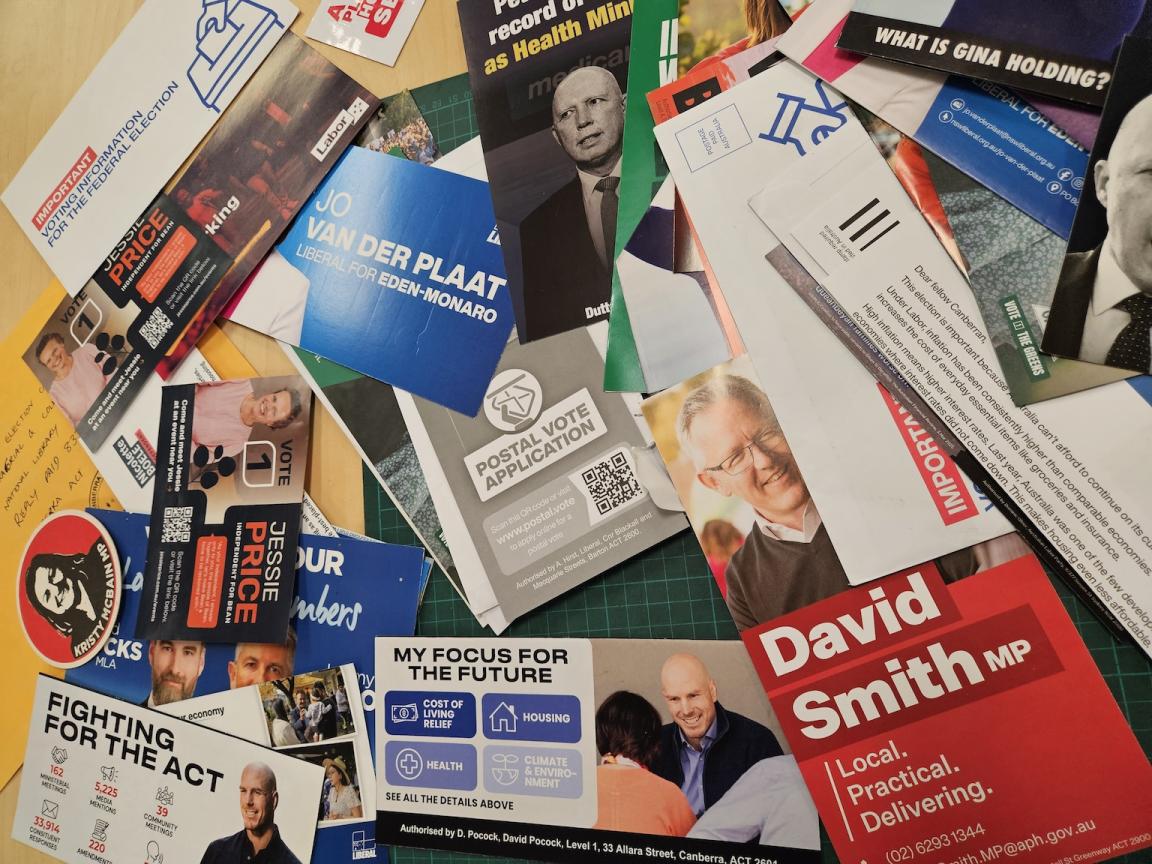
Recently donated 2025 election campaign material.
Recently donated 2025 election campaign material.
This 124-year-old collection takes up more than 52 shelf-metres – if the boxes were laid out end-to-end it would be longer than an Olympic swimming pool!
Much of the existing collection is printed material like leaflets, flyers and how-to-vote cards – the sort of things that are designed to communicate a message and then be thrown out. This is known as “ephemera” in library collections due to the short-lived nature of the material. We also have other campaign material like stickers, badges, t-shirts, and hats, and larger items such as posters, bunting and corflute signs.
Thanks to the generous support of donors during our 2024 Tax Time Appeal, some of the early Federal Election ephemera is now on Trove, with more being digitised everyday.
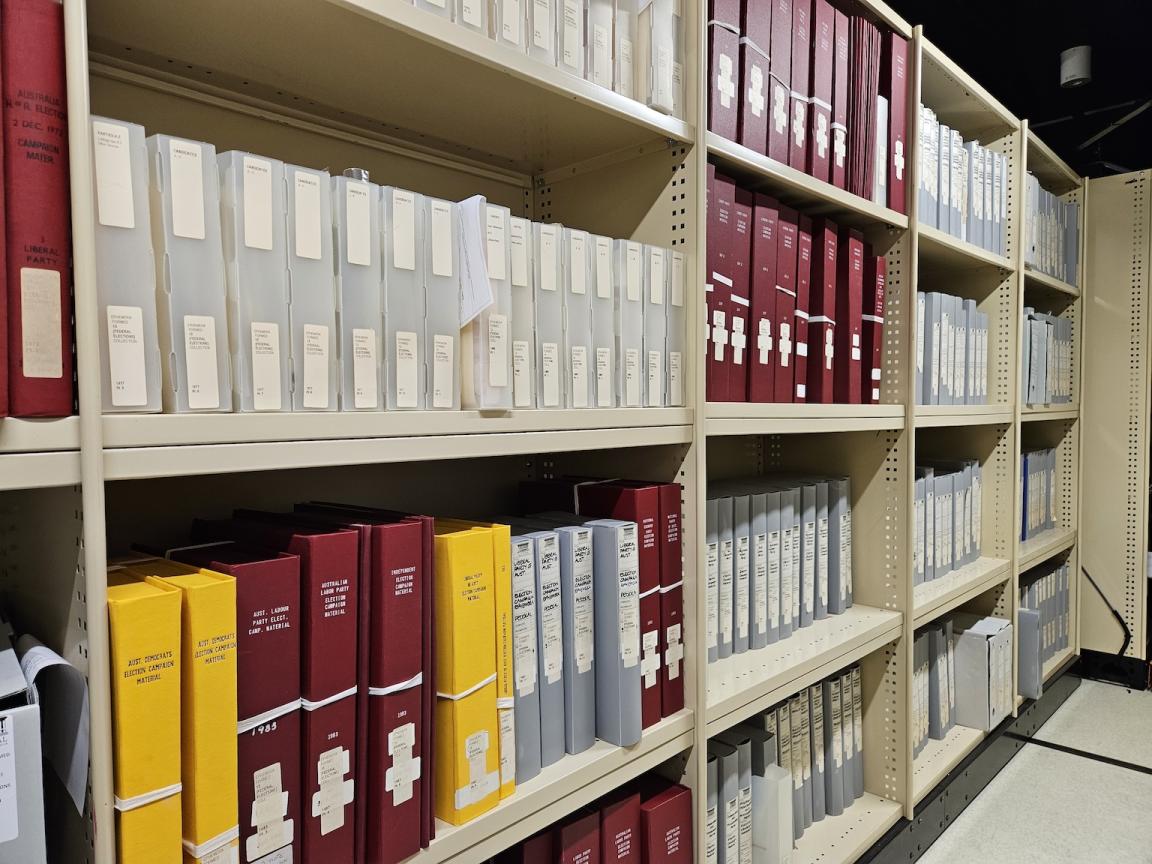
Part of the Library’s federal election ephemera collection.
Part of the Library’s federal election ephemera collection.
This valuable collection is significant for all Australians. It is a powerful record of Australian democracy, capturing the history of individuals and parties, policies and platforms, showing how they have evolved over time. It includes lobby groups and records the hot issues of the day, documenting what was important to Australians during a particular period and in particular places.
In the 1917 election, for example, the war and the repatriation of returned soldiers were key campaign issues.
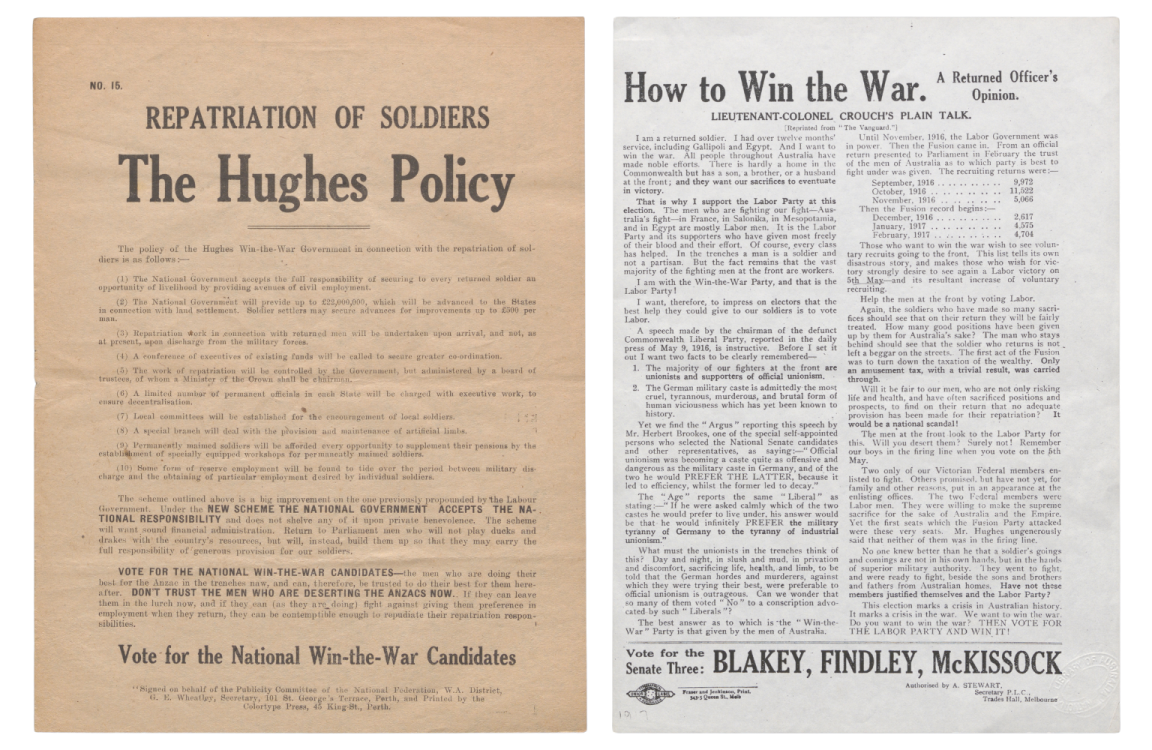
The Nationalist Party, 1917, positions itself as the ‘Win-the-War’ party and outlines repatriation policies for returned men, nla.gov.au/nla.obj-3628487487 and a returned soldier explains his support for the Australian Labor Party campaign in 1917, claiming Labor as the party to ‘win-the war’, nla.gov.au/nla.obj-3628484469
The Nationalist Party, 1917, positions itself as the ‘Win-the-War’ party and outlines repatriation policies for returned men, nla.gov.au/nla.obj-3628487487 and a returned soldier explains his support for the Australian Labor Party campaign in 1917, claiming Labor as the party to ‘win-the war’, nla.gov.au/nla.obj-3628484469
The collection shows the history of a broad spectrum of parties as well as independents. The inclusion of ephemera featuring people who campaigned but were not elected, gives us a deeper understanding of the wider political landscape across different periods of history.
Though never elected to Federal Parliament, feminist and suffragist Vida Goldstein was highly politically active, advocating for votes for women at the turn of the 20th century and campaigning for Federal parliament on several occasions. In the 1903 Federal election she made a bid for a Senate seat as an independent candidate, campaigning again in 1910 and 1917 for the Senate and in 1913 and 1914 for the House of Representatives. Her story is an example of one way in which Australian women were involved in politics long before the first two women (Dame Dorothy Tangney and Dame Enid Lyons) were elected to Federal Parliament in 1943.
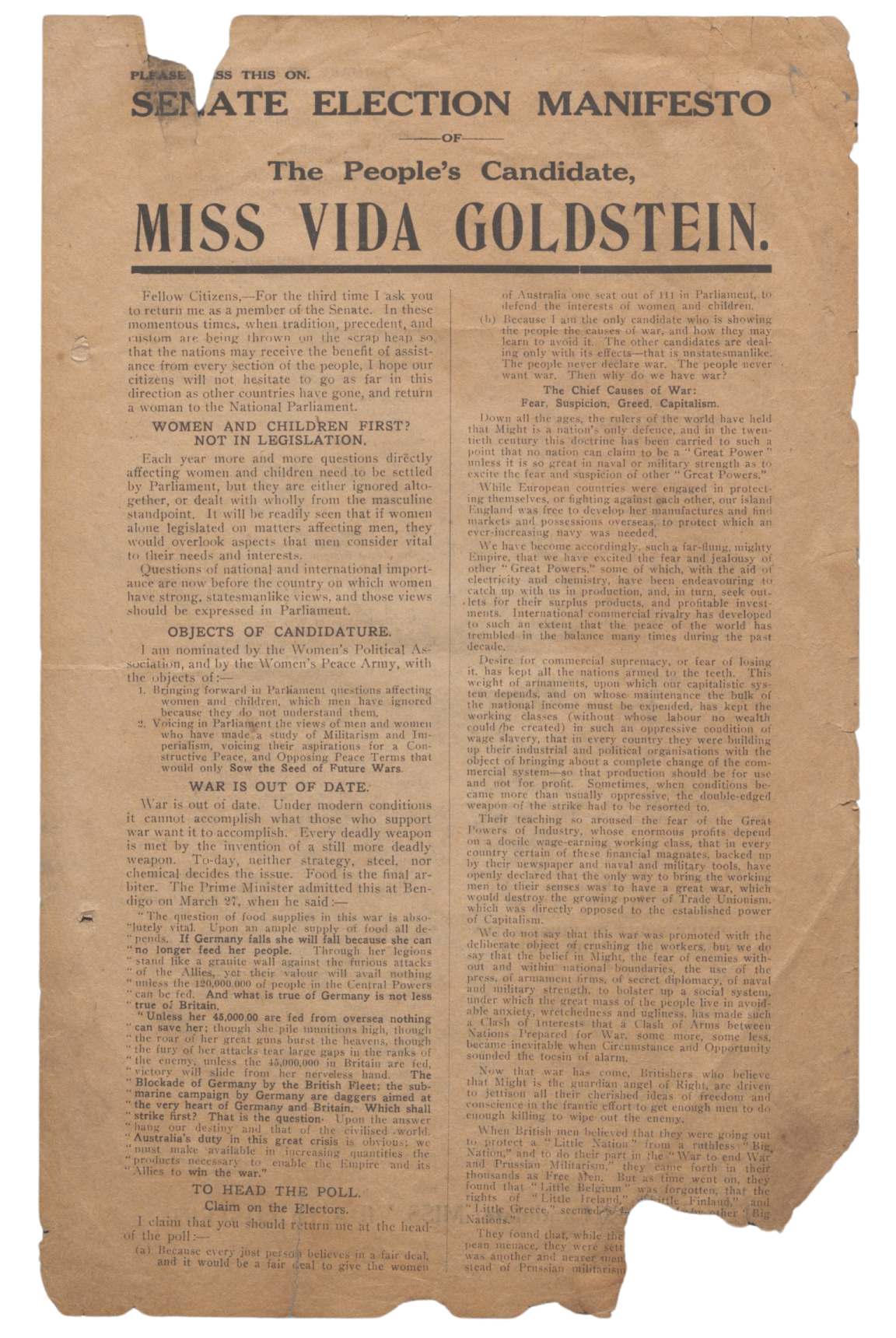
Independent Vida Goldstein’s 1917 ‘Senate Election Manifesto’, nla.gov.au/nla.obj-3628471813
Independent Vida Goldstein’s 1917 ‘Senate Election Manifesto’, nla.gov.au/nla.obj-3628471813
Along with documenting our political history, the collection illustrates a broader history of Australia - who is living here and where they are concentrated, and who has the right to vote.
These materials might be used by biographers, journalists, historians, or students to explore many things beyond the obvious political themes. Topics like the history of printing, advertising, graphic design, environmental policies or women’s rights are among the many which could be explored in the collection. The material also reveals how different parties campaigned for the votes of specific demographic groups, such as the early 20th century appeals to women voters.
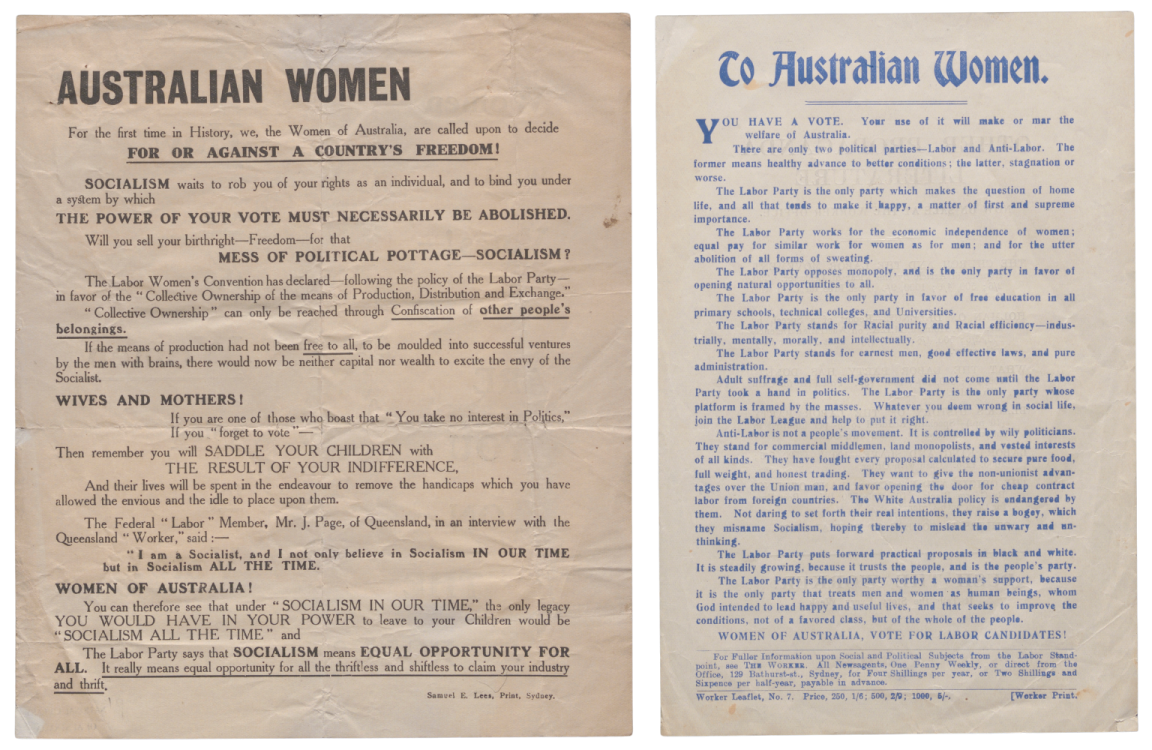
Commonwealth Liberal Party appeal to women voters in 1910, nla.gov.au/nla.obj-3622576937 and Australian Labor Party appeal to women voters in 1906, nla.gov.au/nla.obj-3616174970
Commonwealth Liberal Party appeal to women voters in 1910, nla.gov.au/nla.obj-3622576937 and Australian Labor Party appeal to women voters in 1906, nla.gov.au/nla.obj-3616174970
Since the calling of the 2025 election, we have begun receiving donations of campaign material from our wonderful citizen collectors and we’re asking you to help us collect more material from all around Australia. You can help us to make sure that your region, candidates, and the issues that are important to you in this federal election are represented in this collection.
If you, your colleagues, friends and relatives have access to this material, we encourage you to send it to us to add to the national collection. You can send smaller items (A4 size or smaller) for free using our reply-paid address. Our address is:
Federal Election Campaign Ephemera
Curatorial & Collection Research
National Library of Australia
Reply Paid 83399
CANBERRA ACT 2600
If you are in Canberra, you can also deposit items into one of the clearly labelled boxes in the Library’s Main Reading Room.
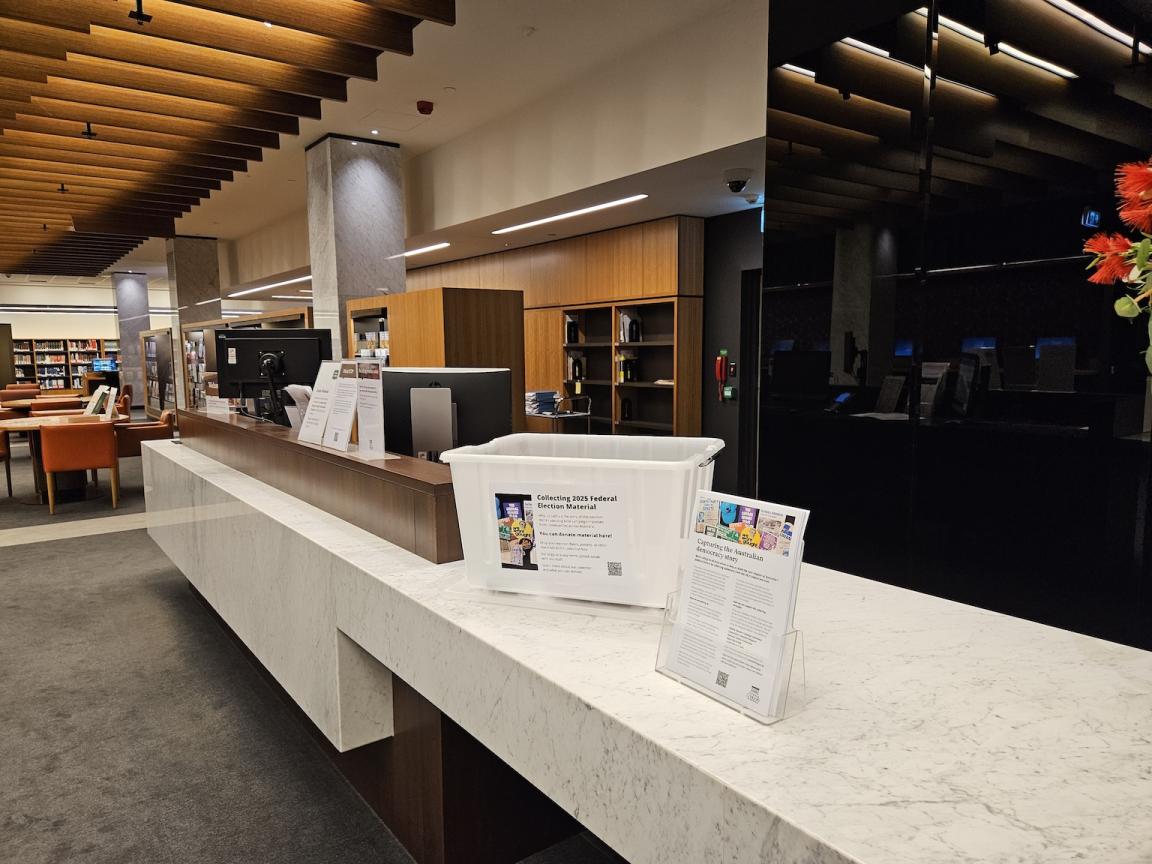
One of the Library’s collection boxes in the Main Reading Room.
One of the Library’s collection boxes in the Main Reading Room.
Visit us
Find our opening times, get directions, join a tour, or dine and shop with us.